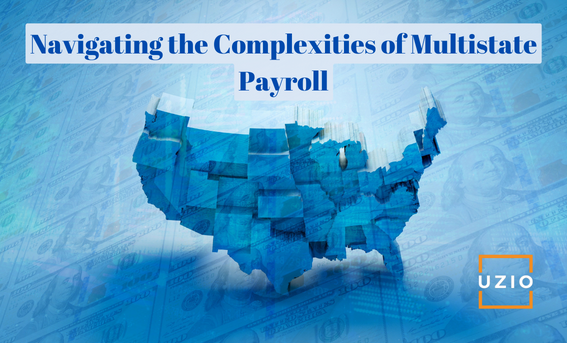
Navigating Multistate Payroll: Key Considerations and Best Practices
Quick links
-
Introduction
-
Employee Residence vs. Work Location
-
State Income Tax Withholding
-
Nexus and Employment Laws
-
State Unemployment Insurance (SUI)
-
Remote Work Considerations
-
Conclusion
1. Introduction
Managing payroll can be complex, and it becomes even more challenging when you have employees working in multiple states. Each state has its own unique tax laws, labor regulations, and reporting requirements, making multistate payroll a demanding task. In this blog post, we will explore the essential considerations and best practices for effectively handling multistate payroll.
2. Employee Residence vs. Work Location
One of the initial challenges in multistate payroll is determining which state’s tax laws apply to each employee. While some states tax employees based on their residence, others consider the location where work is performed. It’s crucial to understand the rules and regulations of each state to ensure accurate tax withholding and reporting.
3. State Income Tax Withholding
When processing payroll for employees in multiple states, you need to accurately calculate state income tax withholding for each employee based on the applicable state tax rates and any reciprocity agreements between states. Consult state tax authorities or use reliable payroll software to ensure compliance and avoid under or over-withholding.
4. Nexus and Employment Laws
Employers must also be aware of the concept of “nexus” in each state where they have employees. Nexus determines whether an employer is subject to that state’s employment laws, such as minimum wage requirements, overtime regulations, and paid leave provisions. Understand the employment laws in each state to meet your obligations as an employer.
5. State Unemployment Insurance (SUI)
Each state has its own unemployment insurance program, and employers are typically required to contribute to the SUI fund in the states where they have employees. Familiarize yourself with the SUI requirements of each state, including registration, tax rates, and reporting obligations.
6. Remote Work Considerations
With the rise of remote work, many employees may work from a different state than their employer’s physical location. This can create additional complexities in multistate payroll. Understand the implications of remote work, including tax obligations and compliance with employment laws, in both the employer’s state and the employee’s state of residence.
Recommended Reading: Biggest pain point with Payroll and HR software
7. Conclusion
Managing multistate payroll requires a comprehensive understanding of tax laws, employment regulations, and reporting requirements in each state where you have employees. By carefully considering employee residence and work locations, accurately calculating state income tax withholding, complying with employment laws, and leveraging technology and professional expertise, you can streamline your multistate payroll processes while maintaining compliance with all relevant state requirements.
Get in touch with us for an expert-led demo to know more about UZIO payroll services.





